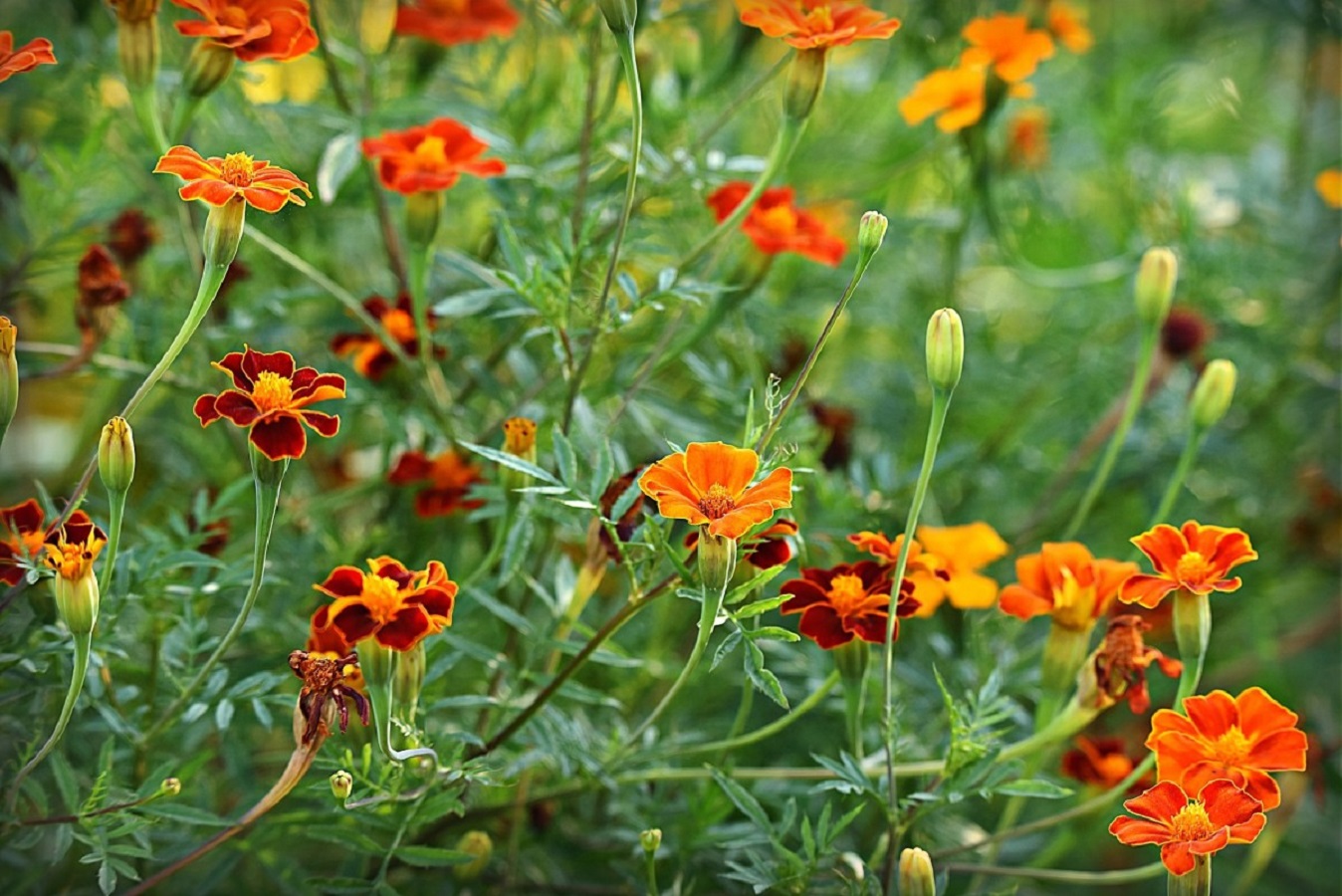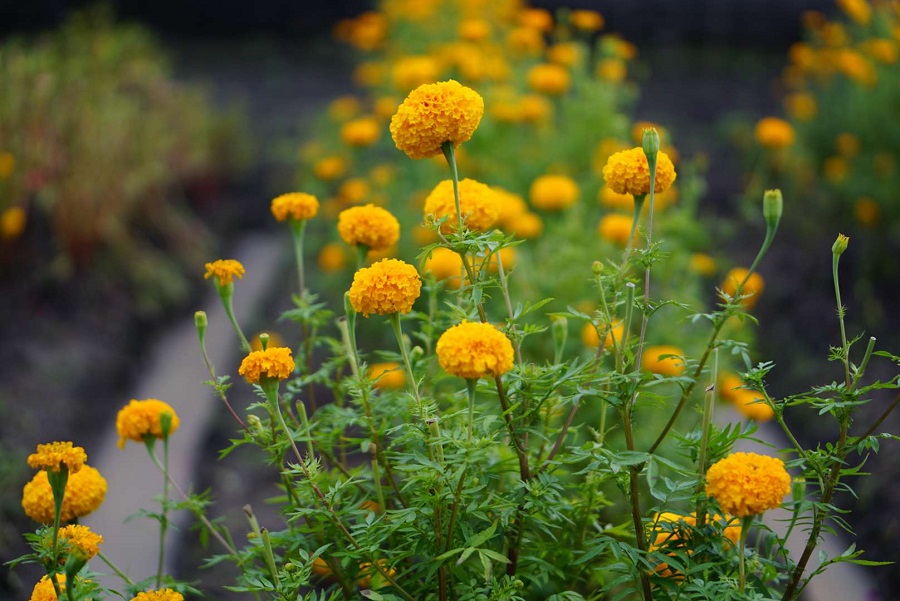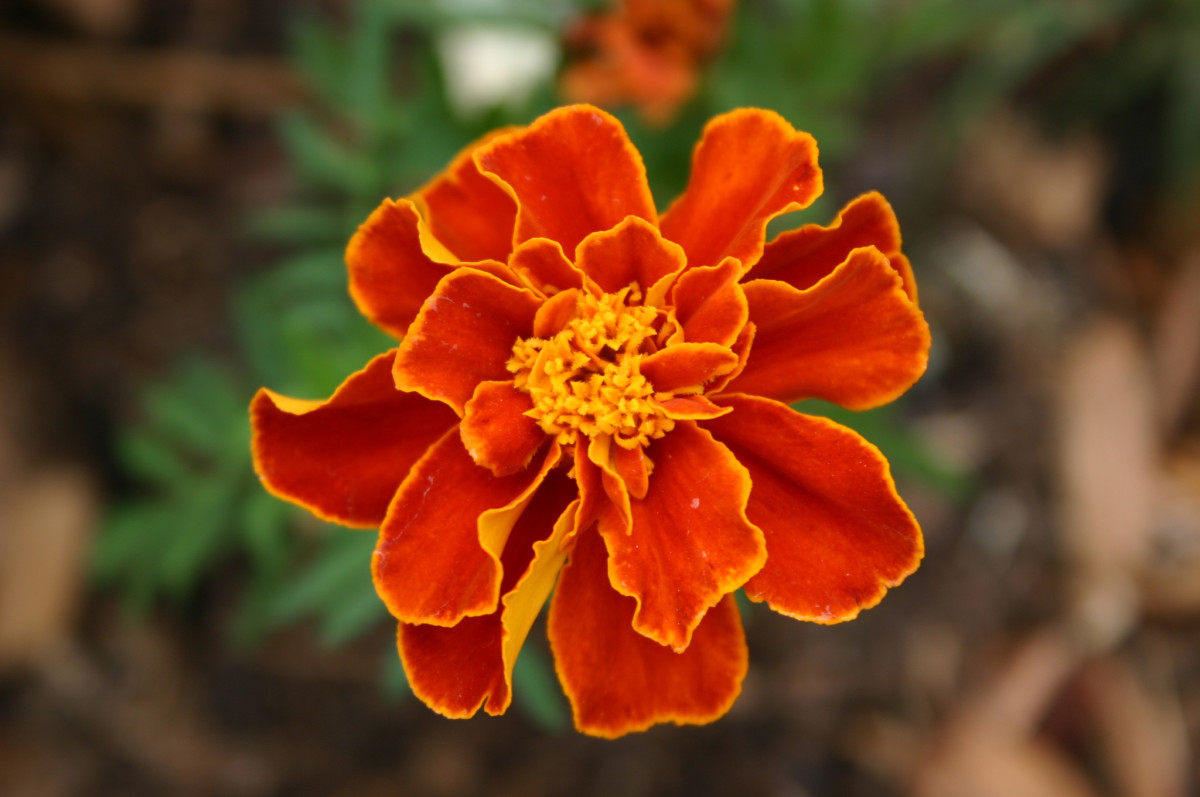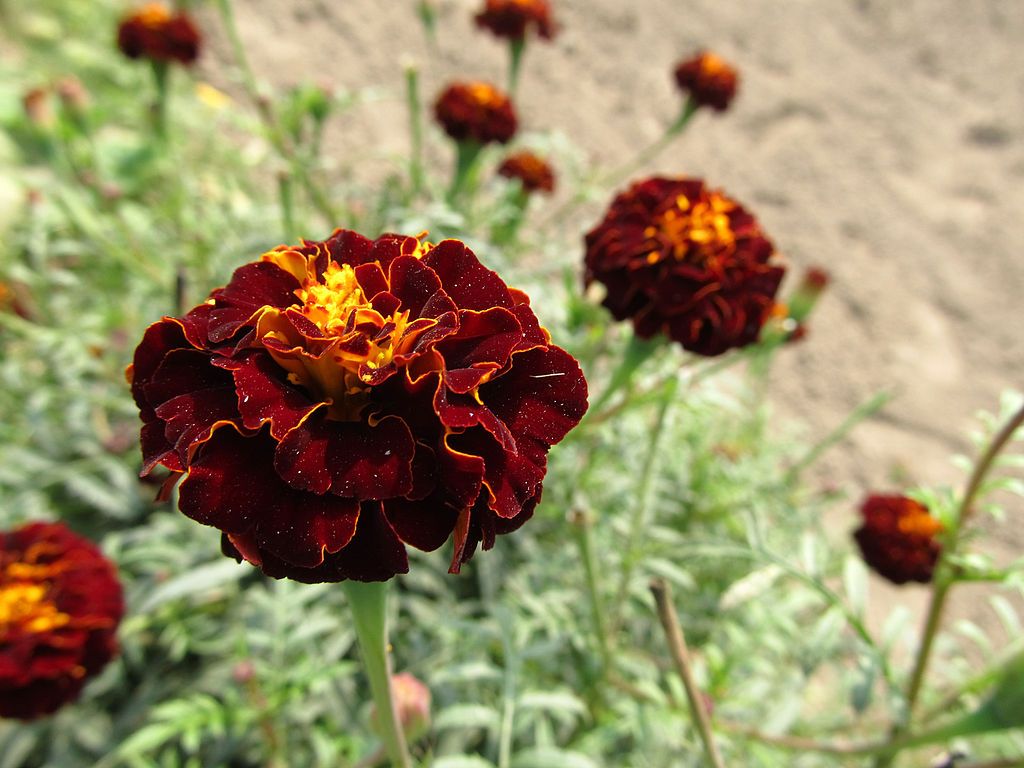Tagetes Blüten - Alles, was Sie über die Pflege von Studentenblumen Wissen Wollten
Die Ringelblume ist eine beliebte einjährige Pflanze, von der es viele Sorten gibt. Sie entwickelt charakteristische Blüten - ihre Größe hängt von der Art der Pflanze ab. Ringelblumen sind nicht schwer zu züchten, obwohl sie bestimmte Bedürfnisse haben. Sie fragen sich, ob Sie Ringelblumen pflanzen sollten? Informieren Sie sich über die Grundlagen der Pflege von Ringelblumen und erfreuen Sie sich an den schönen Pflanzen.

Studentenblume - was für eine Pflanze ist das?
Die Studentenblume (Tagetes) ist eine der beliebtesten Pflanzen. Sie gehört zu den Sonnenblumengewächsen. Sie ist eine einjährige Pflanze, von der es weltweit mehrere Dutzend Sorten gibt. Der natürliche Lebensraum der Ringelblume ist Amerika (sowohl der Norden als auch der Süden). Daher liebt die Pflanze helle, vollsonnige Standorte und hohe Temperaturen.

Wie sehen die Blüten der Ringelblume aus?
Die Ringelblume ist eine Pflanze, die bis zu 50-60 cm hoch wird - die genaue Höhe hängt von der Sorte ab. Die Blüten und Blätter sind die charakteristischsten Merkmale der Pflanze. Die Blätter sind klein und wachsen um den Hauptstamm herum. Die Blüten sind voll und reich, mit unregelmäßigen Blütenblättern in verschiedenen Größen - die kleinsten wachsen in der Mitte, die größten am Rand.
Beliebte Ringelblumensorten
Es gibt viele Arten von Ringelblumen in der ganzen Welt. Schätzungen zufolge gibt es über 40 Ringelblumensorten. Einige davon sind die beliebtesten, wie z. B.:
- Zwerg-Tagetes (Tagetes patula nana)
- Südliche Studentenbohne (Tagetes minuta)
- Französische Studentenblume (Tagetes patula)
- Aztekische Studentenblume (Tagetes erecta)
- Tagetes Tenuifolia (Tagetes tenuifolia)

Wann blühen Tagetes?
Die Studentenblume ist eine lang blühende Pflanze, was sie so beliebt macht. Die Blüten erscheinen zu Beginn des Sommers und können bis in den Spätherbst hinein blühen. Natürlich ist auch eine kürzere Blütezeit möglich, die von der jeweiligen Ringelblumensorte abhängt. Auch die Farbe der Blüten ist von Bedeutung. Hier sind die beliebtesten Farben der Ringelblumen:
- orange,
- gelb,
- rost.

Was ist der beste Boden für Studentenblumen?
Der beste Boden für Ringelblumen ist fruchtbar und durchlässig. Wenn Sie wissen, dass der Boden in Ihrem Garten diese Anforderungen nicht erfüllt, Sie aber trotzdem Ringelblumen anbauen wollen, können Sie den Boden für die Pflanze selbst vorbereiten.
Wenn der Boden fest ist, lockern Sie ihn mit einer Hacke auf, und wenn die Fläche größer ist, verwenden Sie eine Bodenfräse. Achten Sie außerdem darauf, den Boden mit geeigneten Produkten zu düngen. Diese können Sie in einem Gartenfachgeschäft oder online kaufen.
Der beste Standort für Tagetes - Sonne oder Schatten?
Tagetes sind aufgrund ihrer Herkunft wärmeliebend. Achten Sie deshalb darauf, dass der Standort, an dem sie wachsen, in voller Sonne liegt. Ein solcher Standort verspricht die besten Ergebnisse und eine schöne Blüte.

Ringelblumen - Gießen und Häufigkeit
Ringelblumenblumen mögen kein stehendes Wasser. Die Erde darf nicht nass bleiben, daher sollte die Pflanze nicht zu häufig gegossen werden. Aber alles hängt von der Außentemperatur ab. Bei lang anhaltender Trockenheit sollten Sie die Pflanzen täglich gießen. Bei mäßigen Bedingungen reicht es aus, die Pflanzen alle 2-3 Tage zu gießen.
Ringelblume - gesundheitliche Vorteile
Ringelblumen werden häufig in Hausgärten gepflanzt - nicht nur wegen ihres attraktiven Aussehens. Die Pflanze hat zusätzliche Vorteile, dank derer sie außerordentlich nützlich ist. Am wichtigsten ist, dass Ringelblumenblüten dank ihres eigenartigen und intensiven Geruchs Schädlinge im Garten abwehren. Sie sind perfekt gegen:
- Blattläuse,
- Ameisen,
- Maulwürfe.
Das ist aber noch nicht alles. Erfahrene Gärtner bestätigen, dass der Anbau von Ringelblumen in einem bestimmten Gebiet die Bodenqualität verbessern kann. Das bedeutet, dass die Pflanzen Parasiten wie z. B. Nematoden loswerden. Aus diesem Grund empfehlen wir, alle paar Jahre Ringelblumen in Gemüsebeete zu pflanzen.

Wie sät man Tagetesamen aus?
Tagetes werden im Frühjahr ausgesät. Normalerweise geschieht das Mitte März. Die Aussaat ist nicht von den Wetterbedingungen abhängig. Fragen Sie sich, warum? **Weil die Samen zunächst in Töpfe gepflanzt werden, die im Haus aufbewahrt werden - eine Fensterbank ist der beste Standort für sie.
Gießen Sie die richtige Erde in den Topf, in den Sie Ringelblumen säen wollen. Es handelt sich um eine Mischung aus Gartenerde, Sand und Torf. Dadurch wachsen die Samen schneller und die Sämlinge erscheinen in der ersten Woche. Pikieren Sie sie dann aus, damit sie genügend Platz zum Wachsen haben.
Ringelblumen können im Mai ins Beet gepflanzt werden, wenn kein Frost mehr droht. Bald darauf können Sie mit ihrer Blüte rechnen.
Ringelblumen - die häufigsten Gefahren
Interessanterweise kann die Ringelblume zwar einige Schädlinge abwehren, aber sie ist auch für einige anfällig. Die größte Gefahr für die Ringelblume sind Schnecken, die nach einem Regenfall auftreten.
Pilzkrankheiten sind für Ringelblumen ebenfalls gefährlich. Grauschimmel ist die schlimmste. Wenn man nicht schnell genug geeignete Chemikalien einsetzt, kann die Pflanze schwer geschädigt werden.
Spinnmilben gehören zu den am häufigsten vorkommenden Insekten. Man kann sie leicht mit natürlichen Methoden loswerden.

📍 Wie sehen Tagetes aus?
Tagetes Sie werden bis zu 50-60 cm hoch. Ringelblumenblüten können ein- oder mehrfarbig sein - normalerweise sind sie orange, gelb und rostfarben. Ihre Blütezeit ist recht lang - vom Sommeranfang bis zum Spätherbst.
📍 Wann sollte man Studentenblumensamen aussäen?
Die Tagetes werden im März ausgesät - in der Regel in der Mitte des Monats. Sie wachsen etwa 1,5 Monate lang weiter und können dann in die Erde verpflanzt werden. Dies geschieht in der Regel im Mai, wenn keine Frostgefahr mehr besteht.
📍 Wie lange wachsen Tagetes?
Tagetes, die in guten Boden gepflanzt werden, wachsen ziemlich schnell. Nach 5-7 Tagen sollte man die ersten Ergebnisse sehen. Dann müssen Sie die Sämlinge pflegen und im Mai in die Beete pflanzen.
📍 Was stößt die Tagetes ab?
Tagetes sind nicht nur schöne Pflanzen, sie sind auch nützlich. Sie wehren Insekten wie Ameisen und Blattläuse ab. Interessanterweise können Ringelblumenblüten auch Maulwürfe abschrecken.
Empfohlene Artikel




